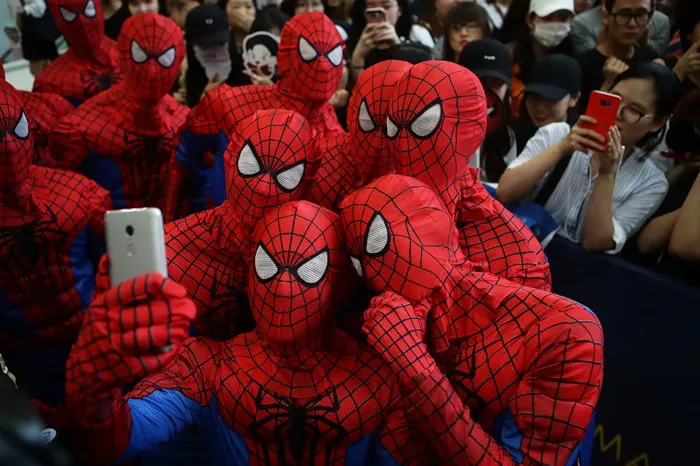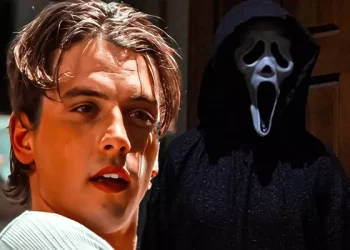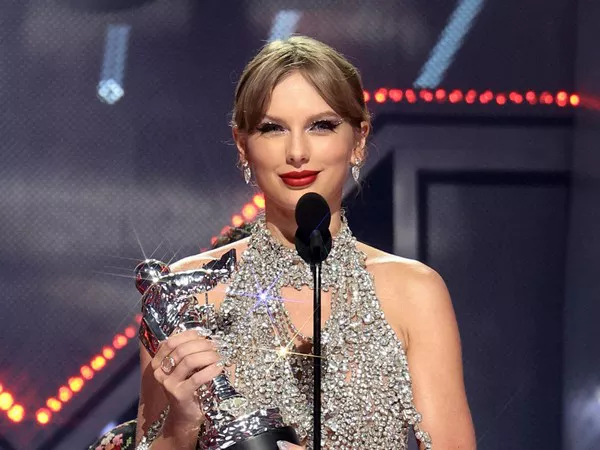The question that has lingered in the minds of Spider-Man enthusiasts for years is undoubtedly, “What Spider-Man movie is the best?” As the friendly neighborhood superhero swung from comic book pages to the silver screen, various filmmakers took the helm, presenting their own interpretations of the iconic character. In this comprehensive exploration, we delve into the spider’s web of cinematic offerings, evaluating the strengths and weaknesses of each installment to determine the ultimate Spider-Man movie.
1. The Genesis: Tobey Maguire’s Spider-Man Trilogy (2002-2007)
The web-slinging phenomenon began its cinematic journey with Tobey Maguire donning the red and blue suit. Sam Raimi’s Spider-Man trilogy (2002-2007) not only set the standard for superhero films but also left an indelible mark on the genre. Spider-Man (2002), Spider-Man 2 (2004), and Spider-Man 3 (2007) collectively defined a generation’s perception of the character.
In “Spider-Man,” Maguire’s earnest portrayal of Peter Parker combined with Raimi’s directorial finesse created a compelling origin story that resonated with audiences. “Spider-Man 2” elevated the game, often regarded as one of the best superhero films ever made, thanks to its emotionally charged narrative, well-developed characters, and groundbreaking visual effects. While “Spider-Man 3” received mixed reviews, Maguire’s tenure solidified the character’s place in cinematic history.
2. A Spectacular Reboot: Andrew Garfield’s The Amazing Spider-Man (2012-2014)
The question of what Spider-Man movie is the best took a new turn with Marc Webb’s reboot, “The Amazing Spider-Man” series (2012-2014), featuring Andrew Garfield as the titular hero. This iteration sought to bring a fresh perspective to the character, exploring untold aspects of Peter Parker’s journey.
“The Amazing Spider-Man” (2012) introduced a modernized narrative, delving into Peter’s parents’ mysterious past and incorporating a more contemporary high school setting. Garfield’s charismatic portrayal added a layer of wit and charm to the character. “The Amazing Spider-Man 2” (2014), while visually spectacular and emotionally resonant, faced criticism for overcrowded storytelling.
3. Enter the MCU: Tom Holland’s Spider-Man (2016-present)
The Marvel Cinematic Universe (MCU) welcomed Spider-Man into its expansive fold with Tom Holland taking up the mantle. “Captain America: Civil War” (2016) marked Holland’s debut, and the subsequent standalone films, “Spider-Man: Homecoming” (2017), “Spider-Man: Far From Home” (2019), and the collaborative effort, “Spider-Man: No Way Home” (2021), catapulted the character to new heights.
“Spider-Man: Homecoming” successfully blended superhero action with John Hughes-esque high school comedy, presenting a youthful and relatable Spider-Man. “Spider-Man: Far From Home” expanded the character’s global footprint, introducing intriguing new elements to the narrative. The multiverse-bending “No Way Home” not only delighted fans with nostalgic callbacks but also showcased Holland’s growth as an actor and the character’s evolution.
4. Into the Spider-Verse: An Animated Triumph (2018)
In the quest to determine what Spider-Man movie is the best, we cannot overlook the animated gem, “Spider-Man: Into the Spider-Verse” (2018). Directed by Peter Ramsey, Rodney Rothman, and Rodney Persichetti, this film offered a groundbreaking take on the Spider-Man mythos, exploring the concept of a multiverse where multiple Spider-People from different dimensions converge.
“Into the Spider-Verse” not only won the Academy Award for Best Animated Feature but also garnered widespread acclaim for its innovative animation style, compelling storytelling, and diverse representation of Spider-People. Miles Morales, voiced by Shameik Moore, brought a refreshing perspective to the character, and the film’s bold approach to the source material set a new standard for superhero animation.
5. The Human Element: Comparing the Protagonists
A crucial factor in determining what Spider-Man movie is the best lies in the portrayal of the iconic character. Tobey Maguire, Andrew Garfield, and Tom Holland each brought their unique interpretation to Peter Parker, influencing the overall tone and impact of their respective films.
Maguire’s Peter Parker exuded a relatable and earnest quality, capturing the essence of the character’s comic book roots. His journey from a timid high school student to a seasoned superhero resonated with audiences, making the Raimi trilogy a defining era for Spider-Man on film.
Andrew Garfield’s Peter Parker, on the other hand, leaned towards a more contemporary and socially aware interpretation. Garfield injected a dose of humor and sarcasm into the character, reflecting a modern sensibility that appealed to a younger audience. However, some critics argue that this version deviated too far from the traditional Spider-Man persona.
Tom Holland’s take on Spider-Man introduced a youthful and exuberant energy to the character. Positioned within the MCU, Holland’s Peter Parker navigated a world filled with seasoned superheroes, providing a unique perspective on the challenges of being a young hero. His chemistry with the ensemble cast, especially with Robert Downey Jr.’s Tony Stark/Iron Man, added layers to the character dynamics.
In “Into the Spider-Verse,” Shameik Moore’s Miles Morales brought a refreshing change, offering a different cultural perspective and showcasing the diversity within the Spider-Man mythos. The film’s success highlighted the potential for varied interpretations of the character beyond the familiar Peter Parker.
6. Villains and Antagonists: The Catalysts of Conflict
The best Spider-Man movie is not only defined by its titular hero but also by the quality of its villains. Each film explored different antagonists, contributing to the overall narrative and emotional depth.
Raimi’s trilogy introduced iconic villains like Willem Dafoe’s Green Goblin, Alfred Molina’s Doctor Octopus, and Topher Grace’s Venom. These characters, while occasionally teetering on the edge of campiness, became memorable components of the Spider-Man mythos. The emotional stakes were raised as Peter faced personal losses and internal conflicts.
Webb’s series brought a grittier tone with Rhys Ifans as Dr. Curt Connors/The Lizard and Jamie Foxx as Max Dillon/Electro. The emphasis on the personal connections between Peter and his adversaries added layers to the conflicts, making them more than mere obstacles to be overcome.
In the MCU, Holland faced off against Michael Keaton’s Vulture, Jake Gyllenhaal’s Mysterio, and in “No Way Home,” a multiverse of villains, including Alfred Molina reprising his role as Doctor Octopus and Willem Dafoe as Green Goblin. The MCU’s approach to developing complex villains with relatable motivations contributed to the success of these films.
“Into the Spider-Verse” featured a unique array of villains, with Kingpin, Prowler, and the multiverse threat, showcasing the animated film’s ability to balance multiple antagonists while giving each a meaningful role in the narrative.
7. Technical Brilliance: From Special Effects to Soundtrack
The best Spider-Man movie is not solely determined by its narrative and characters but also by the technical prowess exhibited in its production. Each era brought advancements in filmmaking techniques, and the Spider-Man films were no exception.
Raimi’s trilogy, particularly “Spider-Man 2,” was praised for its groundbreaking visual effects, especially the seamless integration of Doc Ock’s mechanical tentacles. The practical effects combined with CGI created a cinematic spectacle that set a benchmark for superhero films at the time. Danny Elfman’s iconic score also contributed significantly to the film’s emotional impact.
Webb’s series introduced a more modern and sleek visual style, with improved CGI capabilities bringing Spider-Man’s acrobatics to life. The kinetic energy of the action sequences was complemented by a contemporary soundtrack, reflecting the character’s youthful spirit.
The MCU’s Spider-Man films continued the trend of pushing the boundaries of visual effects, with “Spider-Man: Far From Home” featuring mind-bending illusions courtesy of Mysterio. The collaboration with other MCU characters also allowed for grander and more visually stunning set pieces.
“Into the Spider-Verse” stands out not only for its innovative animation style but also for its dynamic and culturally diverse soundtrack. The film’s visual flair, including the use of comic book-style animation panels, showcased a commitment to artistic creativity rarely seen in mainstream animated films.
8. Impact on the Genre: Redefining Superhero Cinema
The question of what Spider-Man movie is the best extends beyond personal preferences to the broader impact each film had on the superhero genre. Raimi’s trilogy laid the foundation, proving that superhero films could be both commercially successful and critically acclaimed. “Spider-Man 2,” in particular, influenced the trajectory of superhero storytelling, setting a standard for character development and emotional depth.
Webb’s series, while not as universally praised, introduced a more contemporary and socially aware Spider-Man, reflecting the evolving tastes of audiences. The emphasis on a younger, tech-savvy Peter Parker hinted at the genre’s ability to adapt to changing times.
The MCU’s integration of Spider-Man into its vast universe marked a significant moment in cinematic history. The collaboration between studios and the seamless inclusion of Spider-Man in the larger narrative exemplified the potential for interconnected storytelling on an unprecedented scale. Tom Holland’s Spider-Man became a linchpin, connecting various storylines and characters within the MCU.
“Into the Spider-Verse” redefined not only animated superhero films but also challenged the conventions of mainstream cinema. Its critical acclaim and box office success demonstrated that audiences were not only receptive to diverse interpretations of well-known characters but also hungry for innovative storytelling and artistic expression.
Conclusion: Untangling the Web to Find the Best Spider-Man Movie
In the quest to answer the perennial question of what Spider-Man movie is the best, the answer is as complex and multifaceted as the character himself. Each era brought something unique to the table, contributing to the evolution of Spider-Man on the big screen.
Tobey Maguire’s trilogy set the stage, establishing the character’s cinematic presence with emotional depth and iconic moments. Andrew Garfield’s tenure injected modernity and social relevance, while Tom Holland’s integration into the MCU expanded the character’s horizons, offering a fresh perspective on the superhero experience.
“Spider-Man: Into the Spider-Verse” stands as a testament to the character’s enduring appeal and the potential for creative storytelling in the superhero genre. Its impact on animated cinema and the genre as a whole cannot be overstated.
Ultimately, the best Spider-Man movie is subjective, shaped by personal preferences, nostalgia, and the aspects of the character that resonate most with each viewer. Whether swinging through the streets of New York in a practical suit or animated in a visually stunning multiverse, Spider-Man’s cinematic journey continues to capture the hearts of audiences worldwide, leaving an indelible mark on the tapestry of superhero cinema.























